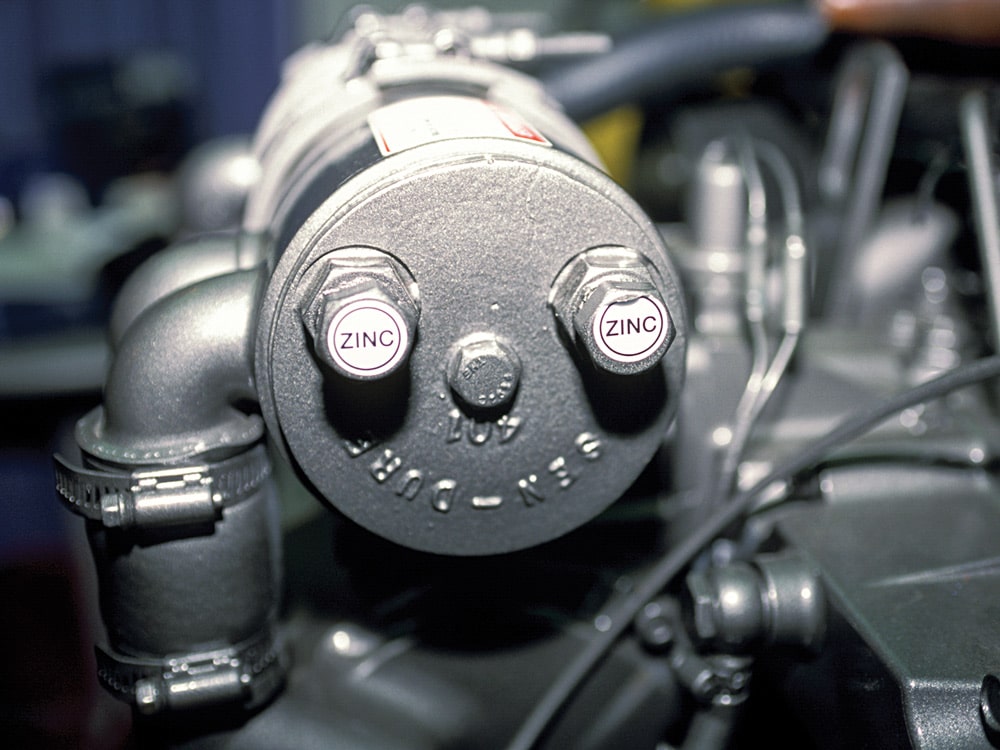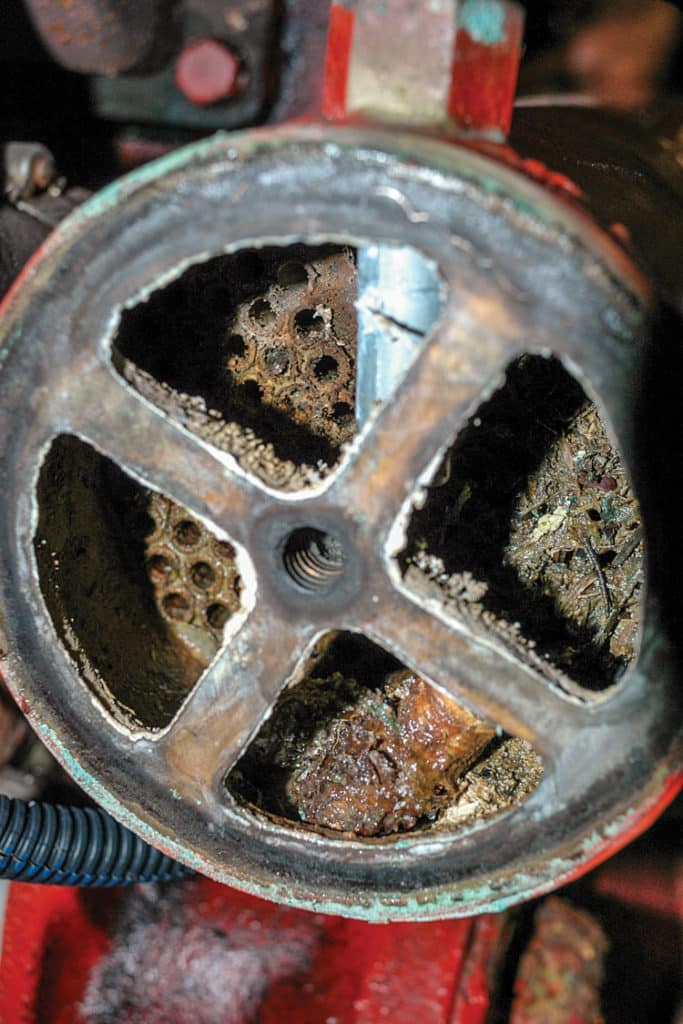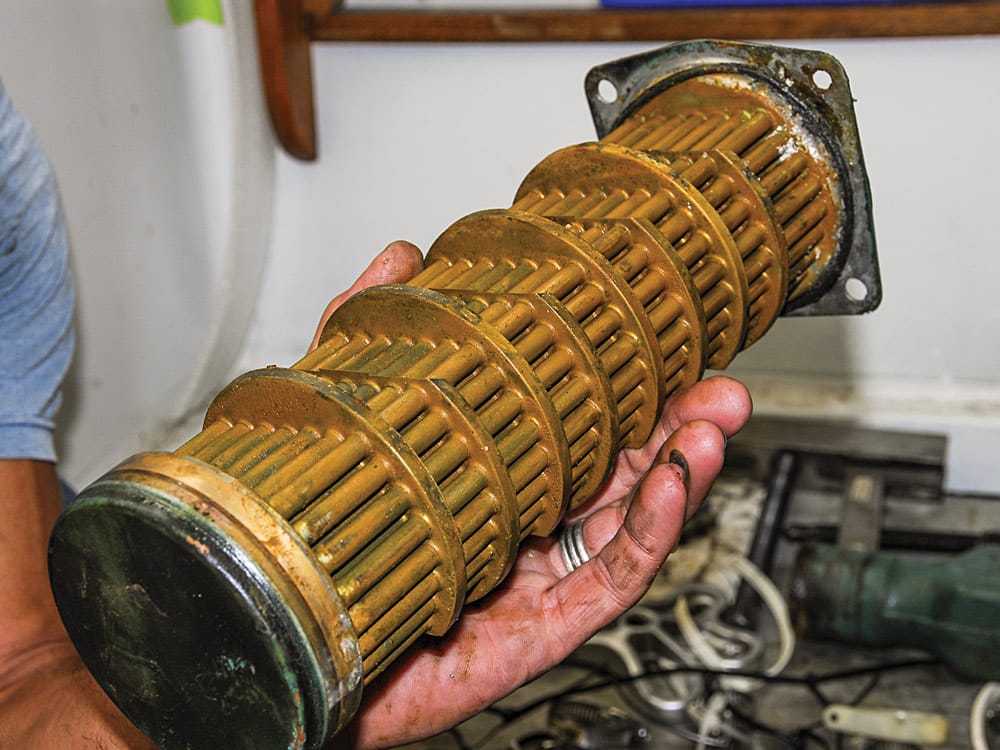
Unlike that of an automobile, via a closed cooling system and a heat exchanger, your boat’s diesel engine transfers its waste heat from coolant to seawater, rather than air. The heat exchanger is the radiator of your auxiliary.
While there are several different designs, the most common on cruising-boat auxiliaries are the tubular variety. The external shell looks a bit like a pipe; housed within it is a series of tubes that resemble drinking straws, which are surrounded by coolant. Seawater passes through the tubes, absorbing heat from the coolant. It’s a simple arrangement that allows engines to be filled with coolant rather than seawater, thereby reducing corrosion and increasing efficiency. Engines that are cooled directly by seawater must operate at a lower, and therefore less efficient, temperature to prevent salt from precipitating and accumulating within the cooling passages.
As simple as heat exchangers are, they are far from foolproof. The mixture of hot coolant and cold seawater makes for a stressful life where metal is concerned. Add to that the potential for corrosion, and the likelihood for failure goes up considerably, particularly if they are ill-maintained.

Many, but not all, heat exchangers are equipped with sacrificial anodes, which must be replaced regularly. Their consumption rate varies with conditions, use, water temperature and salinity. While many users simply replace them seasonally, it’s best to initially remove them monthly for inspection, to determine their rate of consumption for your use patterns. In some cases, they may need to be replaced annually; in others, more often.
One of the more common maladies where anodes are concerned is the accumulation of depleted pencil zincs in the chamber at the end of the heat exchanger. Contrary to popular belief, these anodes are not consumed, because their electrical contact with the heat exchanger housing is tenuous at best. Instead, they simply pile up, blocking water flow in the process. If you remove the anode plug and there’s no remnant of a pencil zinc attached, it likely means two things: Your replacement interval is too long, and some portion of the anode has been left behind (they rarely erode away completely without separating from the plug).

For this and other reasons, heat exchanger end caps should be removed annually for an inspection and clean-out. Doing so is typically straightforward and well within the capabilities of a do-it-yourselfer with moderate technical skills. Replacement gaskets should be on hand (see “Gasket Case,” March 2018) because gaskets often tear or are not reusable. Be sure not to overtighten the end caps because many are conical and will crack if their fasteners are over-tensioned. Look carefully at the detritus you remove. Dead zincs and a bit of sea grass are typical, but if you see impeller parts, be sure to check the raw-water pump. Virtually every heat exchanger I open does contain some impeller parts, which often are years old and from previous impellers, so don’t be surprised if the impeller inspection yields no damage. Regardless, it should still be checked if pieces are discovered in the heat exchanger.
If both ends of the heat exchanger can be opened, do so and place a bright light at the far end. Look through the tubes to determine if there are any obstructions. If so, a shot of water from a garden hose might blast them out; otherwise, you might need to be more aggressive. Soft, solid copper wire (insulated is best) that offers a loose fit in the tube can be used to gently push through obstructions. Alternatively, a wooden dowel may be used. But never use steel wire because it might damage tubes. The watch word here is caution. Go easy, and never force anything into the tubes. If there is evidence of scale buildup, a chemical flush/descaling will be required.
*Steve D’Antonio offers services for boat owners and buyers through Steve D’Antonio Marine Consulting. *








